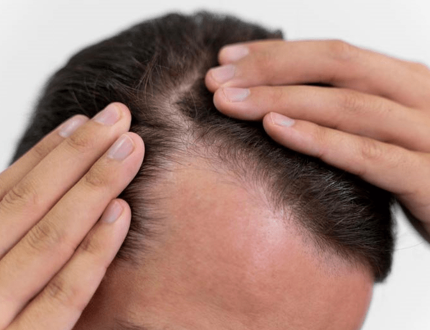As exosome therapy gains momentum in both regenerative medicine and aesthetics, Korea is leading the way in developing high-quality, clinically safe exosome products. Known for its rigorous approach to biotechnology, Korean medicine emphasizes purity, safety, and standardized protocols in the manufacturing of exosomes—whether they are used in skincare, anti-aging treatments, immune modulation, or wound healing.
This article dives into the meticulous process behind exosome manufacturing in Korea, the purity standards that make these treatments safe and effective, and how Korean regulatory systems ensure the highest level of product quality.
🧬 What Are Exosomes?
Exosomes are extracellular vesicles (30–150 nanometers) released by cells, especially mesenchymal stem cells (MSCs). These vesicles are rich in:
- Growth factors
- Cytokines
- RNA (miRNA, mRNA)
- Proteins
- Lipids
They function as cellular messengers, stimulating healing, reducing inflammation, and promoting tissue regeneration.
In Korea, exosomes are increasingly used in:
- Anti-aging and skin rejuvenation
- Scar and wound healing
- Immune support and inflammation control
- Hair regrowth and post-laser recovery
🏭 How Exosomes Are Manufactured in Korea
Exosome production is a multi-stage process that requires strict control over cellular source, culture conditions, purification, and storage. Here’s a breakdown of the key steps in Korean exosome manufacturing:
1. Cell Source Selection
The process begins by selecting a safe, consistent source of stem cells:
- Adipose-derived stem cells (ADSCs)
- Umbilical cord-derived MSCs
- Dental pulp stem cells
- Placental or amniotic stem cells
Korean labs often use GMP-certified cell banks with detailed donor screening and pathogen testing.
2. Cell Culturing Under Sterile Conditions
Stem cells are cultured in xeno-free, serum-free media in cleanroom environments. This ensures:
- No risk of animal pathogen contamination
- Consistent quality and yield
- Reduction in immunogenicity
3. Exosome Isolation and Harvesting
Exosomes are collected from the cell-conditioned medium after a defined growth cycle. They are isolated using advanced techniques like:
- Ultracentrifugation
- Tangential flow filtration (TFF)
- Size exclusion chromatography
- Immunoaffinity capture
Each method is chosen based on the desired yield, size uniformity, and purity.
4. Purity and Sterility Testing
Once harvested, exosomes undergo stringent purification and quality control, including:
- Particle size analysis (NTA or DLS)
- Electron microscopy (TEM)
- Western blot for exosome markers (CD9, CD63, CD81)
- Endotoxin and mycoplasma testing
- Sterility and pyrogenicity testing
Only exosomes meeting Korean MFDS (Ministry of Food and Drug Safety) standards are cleared for medical or cosmetic use.
5. Stabilization and Packaging
To maintain stability, exosomes are often:
- Lyophilized (freeze-dried) for reconstitution before use
- Stored at –80°C or in cold-chain transport systems
- Packaged in single-use sterile vials or ampoules
Korea’s top biotech firms use vacuum-sealed, UV-protected packaging to prevent degradation from light and oxygen.
🧪 Quality Control and Purity Standards in Korea
Korean biotech companies and stem cell labs must adhere to:
✅ GMP (Good Manufacturing Practice) Certification
Manufacturing must occur in GMP-certified facilities with ISO-standard cleanrooms, standardized batch production, and contamination prevention protocols.
✅ MFDS (Korean FDA) Regulation
The Korean Ministry of Food and Drug Safety classifies therapeutic exosomes under:
- Advanced Biopharmaceuticals
- Cell-based Medicinal Products
- Functional Cosmetics (for cosmeceutical applications)
Each category has different but strict guidelines for safety, labeling, and clinical claims.
✅ Batch-to-Batch Consistency
Products must show consistency in:
- Particle size
- Concentration (particles/mL)
- Protein and RNA content
- pH, osmolality, and sterility
Leading Korean brands also publish Certificate of Analysis (CoA) for each batch, viewable by clinics or medical providers.
🔬 Leading Korean Exosome Brands Known for Purity
Here are a few companies that manufacture exosomes under high-purity and regulatory standards:
🔹 ExoCoBio – ASCE+
- Derived from ADSCs
- Used in facial rejuvenation and skin healing
- Purified using advanced TFF systems
🔹 Tego Science – Re:Exo
- Umbilical cord-derived exosomes
- Focused on skin repair and medical dermatology
- GMP-certified and MFDS-compliant
🔹 Daewoong Pharmaceutical – CellBio Exosomes
- Designed for clinical regenerative use
- Dual filtration and protein content verification
- Stability-optimized for IV and injection protocols
🔹 Benev Korea – Exosome Regenerative Complex
- Cosmeceutical formulation with proven clinical studies
- Used in dermatology clinics for microneedling and laser recovery
🧘 Why Purity Matters for Patients
Exosomes work by delivering molecular instructions to your skin and immune system. Impurities such as:
- Cell debris
- DNA fragments
- Bacterial toxins
…can cause inflammation, allergic reactions, or reduced therapeutic effect.
High-purity Korean exosomes ensure:
- Improved safety for all skin types
- Enhanced efficacy in regeneration and repair
- Faster recovery post-treatment
- Lower risk of contamination or irritation
✅ Final Thoughts: Korea Sets the Gold Standard
In the rapidly expanding field of exosome therapy, Korea is setting the gold standard in manufacturing, safety, and purity. With the integration of GMP production, government regulation, and biotechnology expertise, Korean exosomes are not just effective—they’re clinically trusted worldwide.
If you’re considering exosome treatments in Korea, always look for:
- GMP-certified providers
- Transparent batch testing
- Clinics that use verified brands
You’re not just investing in beauty or healing—you’re investing in cellular-level wellness with precision Korean science behind it.




